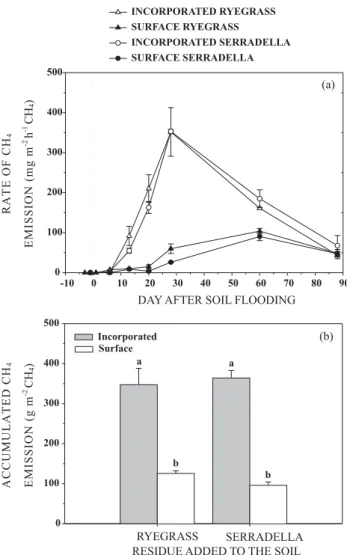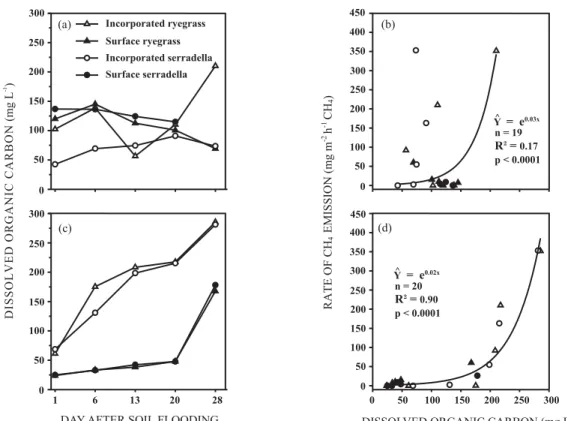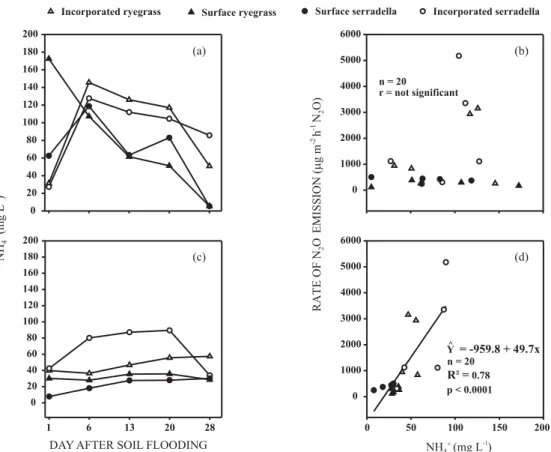MITIGATION OF METHANE AND NITROUS OXIDE EMISSIONS FROM FLOOD-IRRIGATED RICE BY NO INCORPORATION OF WINTER CROP RESIDUES INTO THE SOIL
Texto
Imagem




Documentos relacionados
The growth attributes of rice, especially the dry biomass of plants are negatively affected by both salinity of the irrigation water layer and the soil solution.
This study evaluated the dynamics of N 2 O emissions after the application of different rice straw amounts and nitrate levels in soil solution.. The results showed that N 2
Nitrous oxide emission by nitrification and denitrification in different soil types and at different soil moisture contents and temperatures.. Biogeochemical hot spots and hot
Incorporation of rice straw into the soil just before flooding for water-seeded rice can immobilize mineral nitrogen (N) and lead to the production of acetic acid harmful to the
The number of panicles and shoot dry mass did not increase when residual straw remained on the soil surface, and were 20 % and 14 % higher, respectively, for the average amounts
MZA uses the clustering of soil and crop data as a basis for the definition of management zones by grouping the data into clusters based on the similarity of interaction
Others tests were performed to better evaluate the degradation parameters, the water absorption determination and the simple compression resistance as per Brazilian Standard
Therefore, the study aimed to determine the effect of annual application of PG and limestone on the soil surface without incorporation and of rates of fertilization on the

